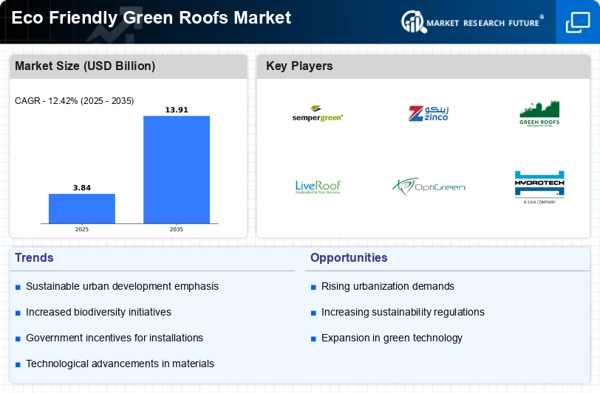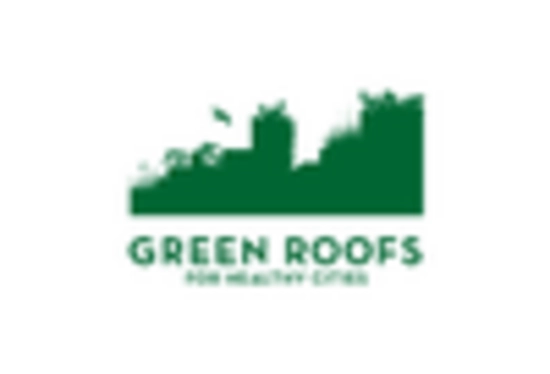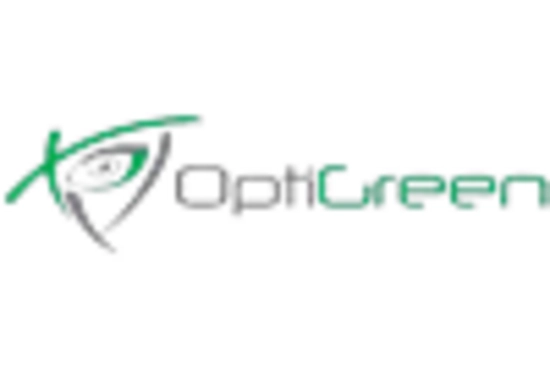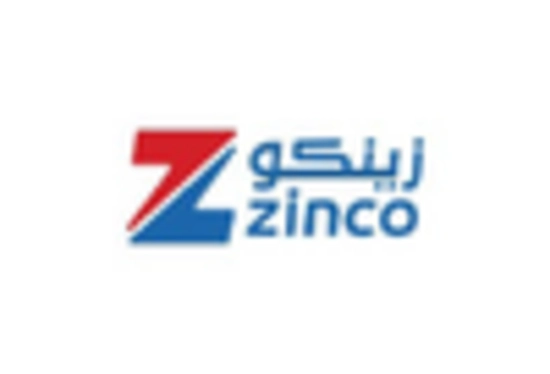Rising Environmental Awareness
The increasing awareness regarding environmental issues appears to be a pivotal driver for the Eco Friendly Green Roofs Market. As urban populations grow, the demand for sustainable building practices intensifies. Consumers and businesses alike are becoming more conscious of their ecological footprints, leading to a surge in the adoption of green roofs. This trend is supported by data indicating that green roofs can reduce urban heat islands by up to 5 degrees Celsius, thereby enhancing energy efficiency. Furthermore, the Eco Friendly Green Roofs Market is likely to benefit from the growing preference for eco-friendly materials in construction, as stakeholders seek to align with sustainable development goals.
Regulatory Support and Policies
Government regulations and policies promoting sustainable construction practices are likely to bolster the Eco Friendly Green Roofs Market. Various jurisdictions have implemented building codes that encourage or mandate the integration of green roofs in new developments. For instance, cities have introduced incentives such as tax breaks and grants for projects that incorporate green roofing solutions. This regulatory framework not only stimulates market growth but also enhances public awareness of the benefits associated with green roofs, such as improved air quality and biodiversity. The Eco Friendly Green Roofs Market is thus positioned to thrive as more municipalities adopt supportive policies.
Economic Benefits of Green Roofs
The economic advantages associated with green roofs are becoming increasingly apparent, which may drive the Eco Friendly Green Roofs Market forward. Studies suggest that green roofs can extend the lifespan of roofing materials by up to 200%, thereby reducing long-term maintenance costs. Additionally, properties with green roofs often experience higher property values and lower energy costs due to improved insulation. This financial incentive is compelling for both developers and homeowners, suggesting that the Eco Friendly Green Roofs Market could see substantial growth as more stakeholders recognize the economic viability of green roofing solutions.
Climate Change Mitigation Efforts
The urgent need for climate change mitigation is increasingly influencing the Eco Friendly Green Roofs Market. Green roofs play a crucial role in reducing carbon emissions and managing stormwater, which are essential components of urban climate strategies. As cities grapple with the impacts of climate change, the integration of green roofs is being recognized as a viable solution to enhance urban resilience. This growing recognition is likely to drive investments in green roofing technologies and infrastructure, further solidifying the Eco Friendly Green Roofs Market as a key player in sustainable urban development.
Technological Innovations in Green Roofing
Technological advancements in green roofing systems are likely to enhance the appeal of the Eco Friendly Green Roofs Market. Innovations such as lightweight growing media, advanced irrigation systems, and modular green roof systems are making it easier and more cost-effective to implement green roofs. These technologies not only improve the efficiency of green roofs but also expand their applicability across various building types. As these innovations continue to evolve, they may attract a broader range of consumers and investors, thereby propelling the Eco Friendly Green Roofs Market to new heights.

















Leave a Comment